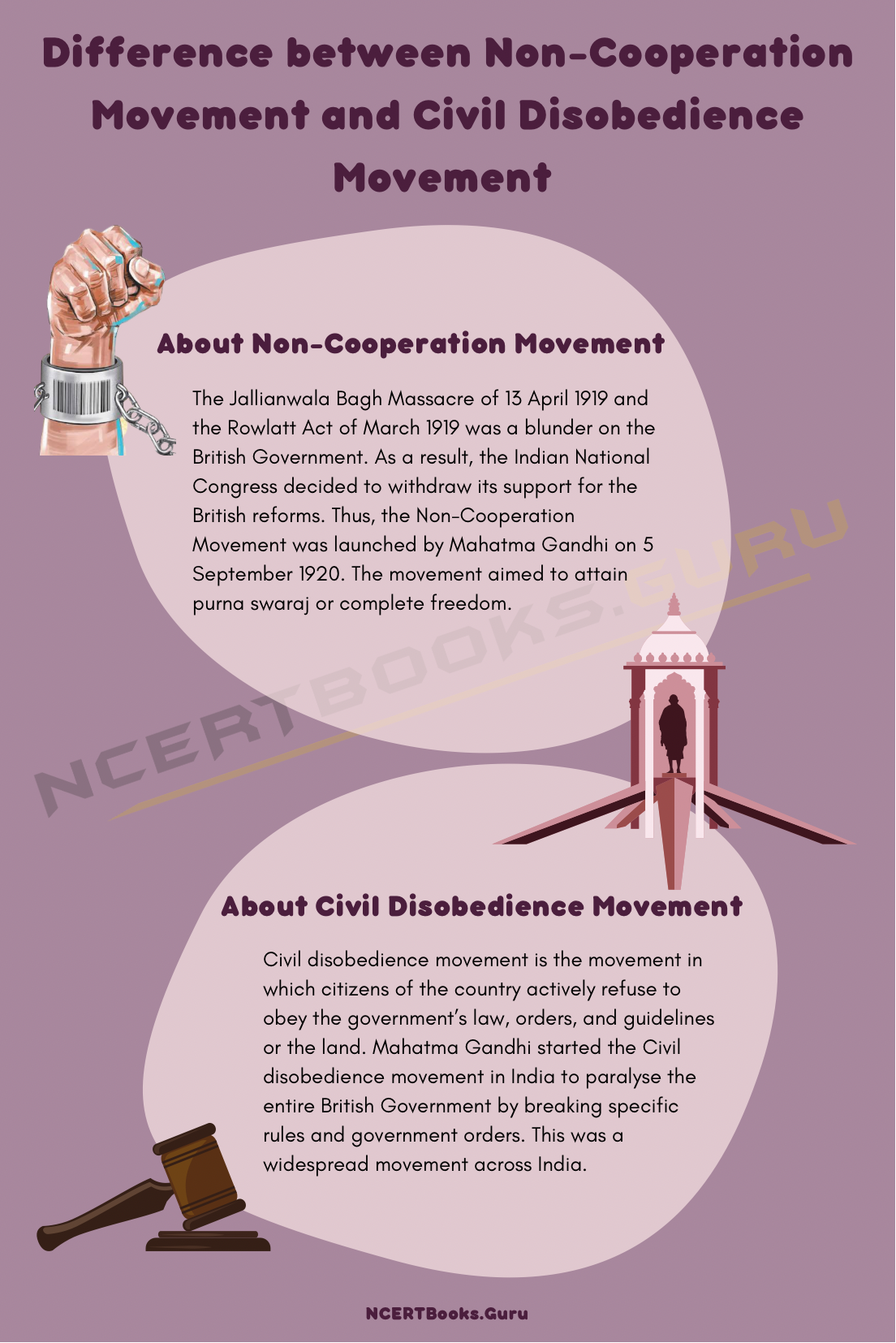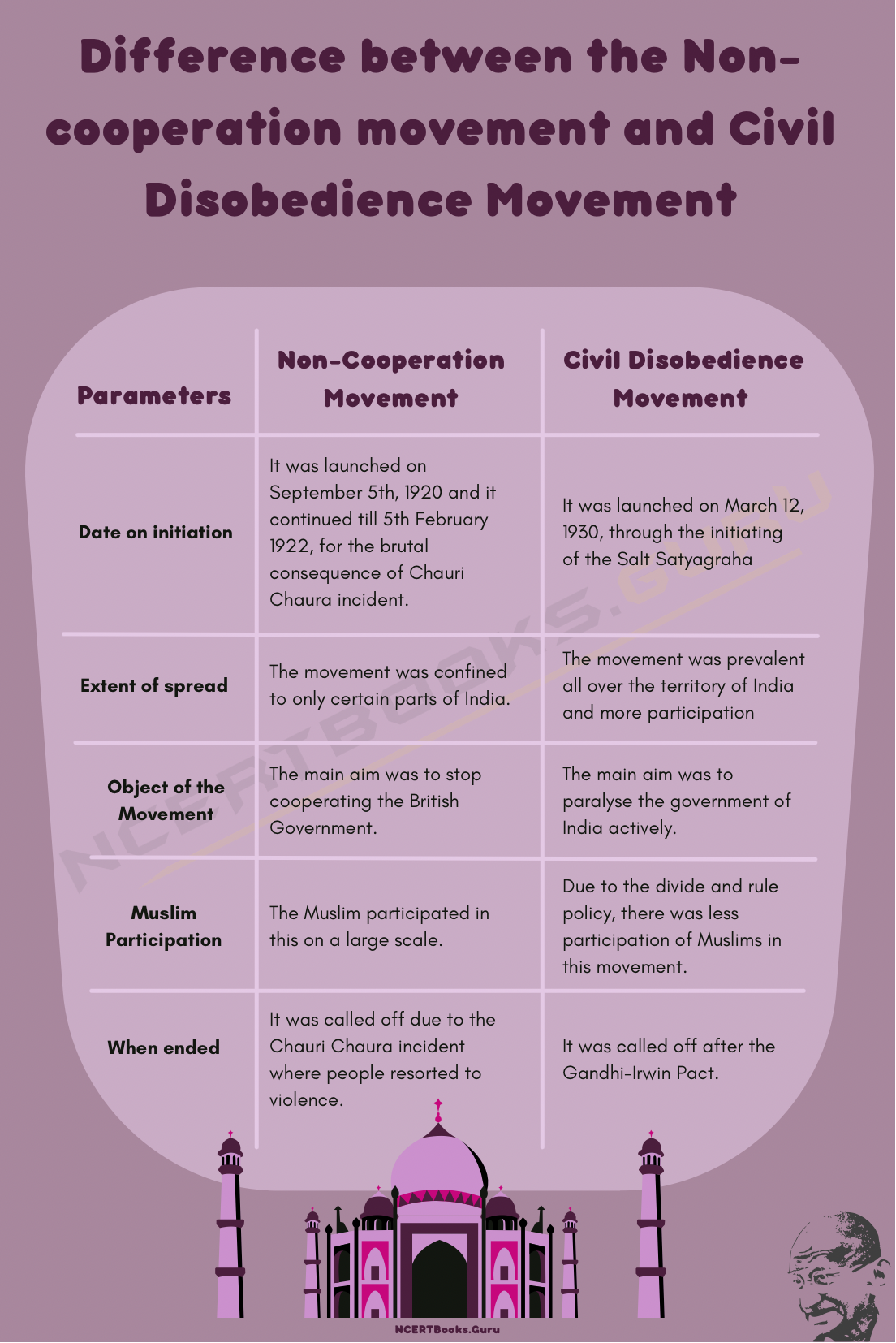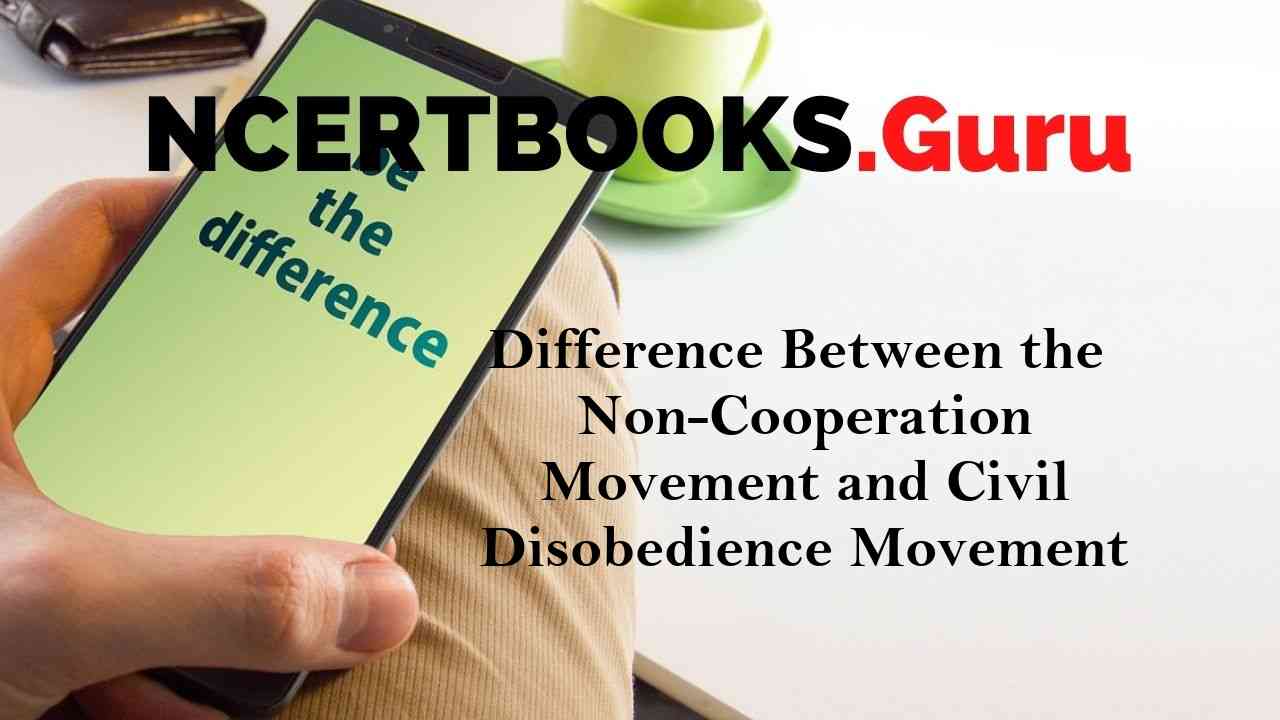Introduction
India was in the ruthless captive of the British Empire for about two hundred long years. To liberate the countries from the British Government’s shackles and attain Independence, every section of the Indian society has taken part in the national freedom struggle, and their sacrifice has gotten us our long lost freedom.
Among the various freedom struggles, the Non-Cooperation Movement and the Civil Disobedience Movement have played a major role in driving out the Britishers from the Indian Territory. Mahatma Gandhi was the pioneer of both movements. However, he received massive cooperation from people all over India.
You can also find differences between articles on various topics that you need to know. Just tap on the quick link available and get to know the basic differences between them.
What is the Difference between Non-Cooperation movement and Civil Disobedience Movement?
About Non-Cooperation Movement
The Jallianwala Bagh Massacre of 13 April 1919 and the Rowlatt Act of March 1919 was a blunder on the British Government. As a result, the Indian National Congress decided to withdraw its support for the British reforms. Thus, the Non-Cooperation Movement was launched by Mahatma Gandhi on 5 September 1920. The movement aimed to attain purna swaraj or complete freedom.
This movement was based on the ideology of truth and non-violence. Through this movement, Mahatma Gandhi persuaded the citizens of India not to cooperate the British Government in administering their functions, which may include restraining from the continuance of the jobs given by British Government, going to educational institutions established by British Government, stopping labour that supported British economy, boycotting British goods and using swadeshi products.
This led to the first arrest of Jawaharlal Nehru and his father, Motilal Nehru. It was called off after the Chauri Chaura incident in February 1922, where Gandhiji found people reported violence.
About Civil Disobedience Movement
Civil disobedience movement is the movement in which citizens of the country actively refuse to obey the government’s law, orders, and guidelines or the land. Mahatma Gandhi started the Civil disobedience movement in India to paralyse the entire British Government by breaking specific rules and government orders. This was a widespread movement across India.

Difference between the Non-cooperation movement and Civil Disobedience Movement
Major difference between Non-cooperation movement and Civil Disobedience Movement
| Parameters | Non-Cooperation Movement | Civil Disobedience Movement |
| Date on initiation | It was launched on September 5th, 1920 and it continued till 5th February 1922, for the brutal consequence of Chauri Chaura incident. | It was launched on March 12, 1930, through the initiating of the Salt Satyagraha. |
| Extent of spread | The movement was confined to only certain parts of India. | The movement was prevalent all over the territory of India and more participation. |
| Object of the Movement | The main aim was to stop cooperating the British Government. | The main aim was to paralyse the government of India actively. |
| Muslim Participation | The Muslim participated in this on a large scale. | Due to the divide and rule policy, there was less participation of Muslims in this movement. |
| When ended | It was called off due to the Chauri Chaura incident where people resorted to violence. | It was called off after the Gandhi-Irwin Pact. |

Similarities between the Non-Cooperation Movement and Civil Disobedience Movement
Both the Non-Cooperation movement and Civil Disobedience movement were intended towards driving the British rulers away from India. Though they were conceptually different from each other, they aimed at driving off foreign rulers from the country. Both these attempts made a heavy impact on their minds. They united people and peacefully protested against the tyranny brought forth on them. After all, Independence was the need of the hour, and these movements made it possible for Indians to have a free country.
FAQs on Difference between Non-cooperation movement and Civil Disobedience Movement
Question:
What makes these movements successful?
Answer:
The active participation of people for the cause made these movements successful. When these movements were called in, British people were practising divide and rule. These movements united people in these hard times.
Question:
What role did these movements play in the independence of India?
Answer:
These movements were crucial in making India the country it is today. It made the British shiver with fear as their divide and rule policy was deemed useless. Taking such bold steps didn’t only make it problematic for foreign rule; it also united people for the cause they wanted. These movements cracked the confidence of the British, enabling India to become independent.
